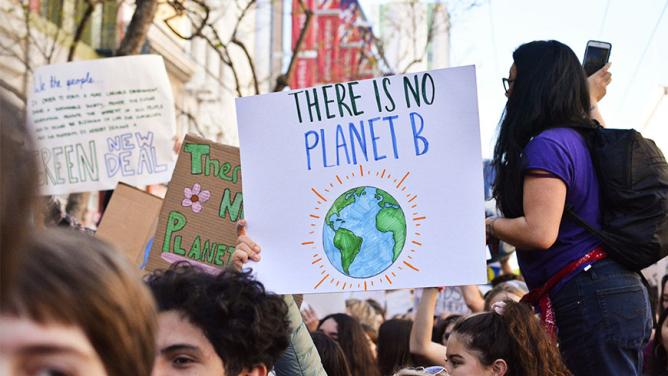Did you say Blue Economy?
First, we must distinguish between two meanings of the “blue economy,” which cover two different trends:
The first comes from a Belgian entrepreneur Gunther Pauli, initiator of the ZERI Foundation (Zero Emissions Research and Initiatives). Here the “blue” is opposed to the so-called “red” or “green” economies. The red economy is built on the perception that natural resources are infinite and inexhaustible. The “green” economy evokes a more responsible consumption with products that aim to respect the environment better. The “blue” economy extends the green economy, inspired by nature and the systemic. It pushes the circular economy to its maximum: each waste of an activity is identified as a resource of another activity.
According to the European Commission, the second definition encompasses “all industries and sectors linked to the oceans, seas, and coasts, whether they are related to the marine environment (such as maritime transport, fishing, and energy production) or the terrestrial environment (such as ports, shipyards, terrestrial aquaculture, and seaweed production, as well as coastal tourism). By extension, and to differentiate itself from traditional non-sustainable maritime activities, the concept of the sustainable blue economy has started to group all the sustainable opportunities offered by the marine environment. This ambition is well reflected in the definition proposed in 2017 by UNESCO: “The blue economy concept seeks to promote economic growth, social inclusion and the preservation or enhancement of livelihoods while ensuring the environmental sustainability of oceans and coastal areas.”
Traditional and emerging activities
The EU Blue Economy Report 2021 distinguishes two typologies of blue economy activities: traditional and emerging activities.
Among the so-called “traditional” activities, there are several broad categories:
- Activities related to living marine resources, which include: fishing, aquaculture, distribution of seafood products
- Those related to non-living marine resources: fossil fuels and minerals
- Activities related to the production of renewable marine energy: offshore energy, production, and transmission
- Port activities: freight, storage, port projects
- Shipbuilding and repair: ships, equipment, machinery, floating structures
- Maritime transport: passenger transport, freight transport
- Coastal tourism: tourism activities and infrastructures
Emerging” activities include ocean energy, biotechnologies used for example in research against genetic diseases, desalination technologies or the development of robotics for maritime work or the laying of submarine cables, a sector in which Google is investing more and more.
An opportunity to meet carbon reduction targets: zero-emission seaports and marine energy
The EU aspires to reduce greenhouse gas emissions by at least 55% by 2030 (compared to 1990 levels) and aims to become carbon neutral by 2050. The blue economy can contribute to this objective by promoting the decarbonization of our industries and infrastructures. This starts with the modernization of ports. As part of the “France Relance 2030” plan, €650 million is available for the maritime sector and nearly €200 million for “port greening” projects, which aim to provide ships with access to non-carbon energy and avoid polluting emissions. Among the measures encouraged are the installation of electric terminals at the quayside, the production of hydrogen, and wind propulsion. The aim is to move towards the concept of a “zero-emission port,” one of the flagship initiatives supported by the European Union through the Sustainable and Smart Mobility Strategy (SSMS).
In addition, networks such as The Atlantic Smart Ports Blue Acceleration Network (AspBAN) promote a new vision of ports that are being transformed into multimodal, energy, circular economy, and communication (for submarine cables) hubs.
800 billion euros needed by 2050 to reach 300 GW of offshore renewable energy in the EU
To accelerate the development of marine renewable energies, the European Commission aims to multiply by 30 the capacity of offshore renewable energies (300GW) by 2050 and estimates that an investment of nearly 800 billion euros will be needed by 2050 to achieve this goal. Against this backdrop, in 2019, VINCI Energies acquired EWE Offshore Service & Solutions GmbH (EWE OSS), a specialist in offshore wind farms and market leader in the North Sea.
In addition, technology for floating offshore wind farms in deep waters and harsh environments is making steady progress. For the record, nearly 80% of the wind in Europe blows in waters at least 60 meters deep, where it is too expensive to attach structures to the ocean floor.
Since 2003, the European Investment Bank (EIB) has financed 33 wind and offshore transmission projects in Belgium, Denmark, Germany, France, the Netherlands, and Portugal for a total signed loan amount of more than 7.5 billion euros. The EIB has also committed to finance floating offshore wind and is ready to support the commercial demonstration of innovative wave and tidal technologies. These energies can also support the production of hydrogen from renewable energies, known as “green hydrogen,” which could be a solution to help decarbonize heavy industry and transport.
Adapting to sea-level rise: another pillar of the blue sustainable economy
By 2050, more than one billion people will live on the coasts, in low-lying areas that could be flooded if the highest estimates of sea-level rise models are realized. Globally, the potential cost of damage could be in the order of $14 trillion per year by 2100.
Several types of solutions protect coastal areas: so-called “hard” solutions such as dikes and breakwaters and other “soft” alternatives with less impact, such as beach nourishment. There are also hybrid solutions such as artificial reefs or constructed dunes. The Sea’ties initiative, led by the Ocean & Climate Platform, has listed on an interactive map the solutions implemented around the world to strengthen the resilience of coastal territories to risks related to sea-level rise.
The concretization and success of these initiatives lie in a precise analysis and understanding of the territory and its characteristics. However, the evaluation of construction costs, associated maintenance, and the life span of the structures remains a challenging exercise. Resallience, a consulting firm specializing in territorial resilience, develops diagnostic tools on these issues to help communities better understand their challenges and potential solutions.
There are also solutions for monitoring the evolution of these infrastructures over time. Current monitoring technologies make it possible to anticipate these variations, such as those deployed by Carapace, a solution resulting from Leonard’s intrapreneurship program, which consists of monitoring and analyzing the movements of dikes.
The good news? Governments are getting involved, finance (starting) to go blue, and innovation structures arise to support innovation worldwide.
The sustainable blue economy is an integral part of the European strategy to reduce carbon emissions, with promises of financial support, notably through the Horizon H2020 calls for projects: “for the next phase of the program (2021 – 2027), at least 35% will be devoted to climate-related actions and support for the transition of maritime industries to climate neutrality.
In June 2021, President Emmanuel Macron formally committed with Prime Minister Solberg, co-chair of the High-Level Panel for a Sustainable Ocean Economy (Ocean Panel), to participate in the sustainable management of 100% of the ocean area under national jurisdiction by 2025 and to support the global goal of protecting 30% of the ocean by 2030. This meeting was followed by the announcement by the French President of the France Relance 2030 investment plan. Among the ten objectives presented: the exploration of the ocean floor for a better understanding of life.
In the financial sector, the DWS Group, a German asset management company (859 billion euros in assets under management as of June 30, 2021), has expanded its range of ESG-themed products with a new global equity fund: the DWS Concept ESG Blue Economy. The objective of this fund, managed by Paul Buchwitz, is to support the “blue economy” and positively impact the sustainable actions of companies.
Finally, to accompany this transition, a new and innovative way of financing solutions related to oceans and water is emerging: “blue bonds.” Ten years ago, the market saw the appearance of the now-famous “green bonds,” which have experienced significant growth with more than $1,000 billion in total emissions, according to Climate Bond Initiative. We can imagine that blue bonds are at the same level as green bonds were ten years ago and could grow just as fast.
And what about entrepreneurs?
In recent years, several structures have emerged to support entrepreneurial innovation in OceanTech worldwide and Europe. We can mention some examples: the crowdfunding platform ekosea, which allows investing in early-stage projects, Business Angels and accelerators like SOA (Sustainable Ocean Alliance), a Californian NGO founded by Daniela Fernandez, which has developed two acceleration programs as well as an incubator launched in 2018. They support start-ups such as ARC marine, which creates 3D printing solutions for eco-responsible artificial concrete corals. Or venture capitalists such as Blue Ocean Partner, founded in 2018 in Paris, whose objective is to support new blue nuggets to develop on the market.
The blue economy, a new field of prospective exploration for Leonard
The blue economy has fundamentally gained influence on the international scene and is part of global environmental governance. Beyond exploring new financing models or implementing new technologies, the sustainable blue economy is based on the conviction that we must succeed in transforming our societies and redefining our relationship with the planet. This is a new dynamic of exploration into which we invite you to dive.
By Ludivine Serrière, Innovation Program Manager at Leonard
Sources :
https://www.novethic.fr/lexique/detail/blue-economy.html
https://ioc.unesco.org/topics/blue-economy
https://eur-lex.europa.eu/legal-content/FR/TXT/PDF/?uri=CELEX:52021DC0240&from=EN
https://ec.europa.eu/commission/presscorner/detail/fr/QANDA_21_2346
https://www.lepoint.fr/argent/les-promesses-de-l-economie-bleue-18-02-2021-2414560_29.php


